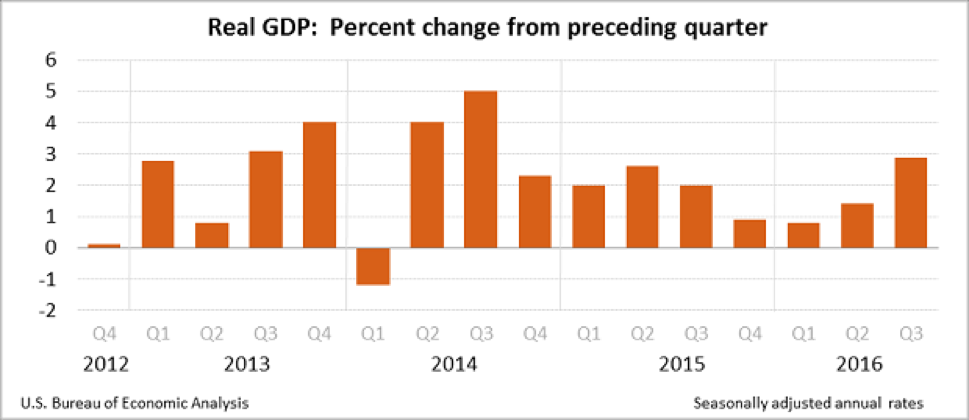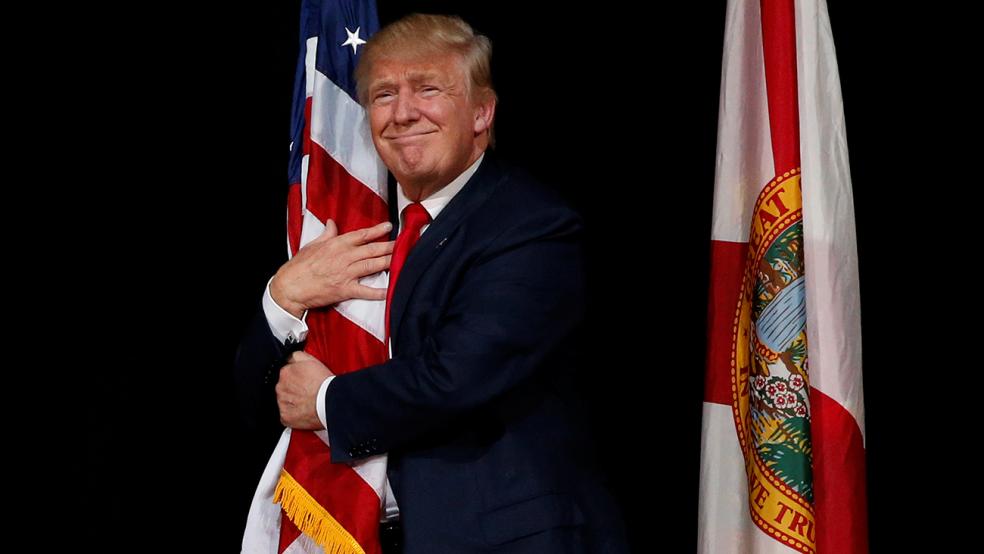The economic decline of the United States has been one of the primary talking points for Donald Trump in his effort to win the White House this election season. In the third and final presidential debate last week, the Republican nominee renewed his claim that the country is in the economic doldrums.
“We are growing, our last report came out, and it is right around the one percent level,” he said from the stage in Las Vegas. “And I think it’s going down.”
Related: Does Trump Really Still Have a Shot?
The first part of his statement was easy enough to fact check at the time. Trump was understating the Commerce Department’s measurement of economic growth in the second quarter of the year, which had actually been 1.4 percent.
It took until this morning to falsify the second half of Trump’s claim. Data released by the Bureau of Economic Analysis found that economic growth, rather than falling in the third quarter, actually more than doubled, to a 2.9 percent annualized rate -- the best number the country has seen in two years.

There is, to be sure, a lot of noise in the quarterly GDP data, leading to some dramatic quarter-to-quarter movement. And overall growth for the year has been weaker, likely around 1.7 percent for the year when all is said and done. But with less than two weeks to go before the November 9 election this report should -- theoretically at least -- strip Trump of one of his key issues on the stump. (That said, having his claims decisively and publicly falsified hasn’t always been enough to stop Trump from making them. See here, here, and here, for example.)
What Trump has apparently chosen to do instead is contrast the BEA’s numbers with what he has been promising his supporters: growth in the neighborhood of 4 percent or greater. That’s widely viewed by economists as hopelessly optimistic, but it’s something Trump has persistently claimed to be able to produce.
Related: Leaked Memo Shows Clinton Foundation’s Tangled Web of Money and Favors
In fact, on Friday morning, the campaign issued a press release declaring the 2.9 percent growth rate to be “dismal.”
“America can do better than the modest growth of 2.9 percent recorded for the 3rd quarter and the dismal growth of 1.5 percent for the past year,” said the campaign’s deputy policy director Dan Kowalski.
"The single most important issue facing the American people is an economy that has failed to deliver jobs, incomes, and opportunity. The Trump economic plan creates at least 25 million jobs and 4 percent growth through tax, trade, energy and regulatory reforms.”
In defense of his promises, Trump has repeatedly compared U.S. growth rates unfavorably with those of other countries. In the debate last week, he said, “So I just left some high representatives of India. They're growing at 8 percent. China is growing at 7 percent. And that for them is a catastrophically low number.”
Related: With Friends Like These? GOP Party Loyalty Takes a Left Turn
The suggestion there is that the U.S. ought to be able to match countries like India and China in growth rates, but that’s really a red herring. Both of those countries have elements of their economy that are grossly underdeveloped, and large segments of the population live as subsistence farmers. In other words, they are starting from a much lower baseline, and even small improvements have an outsized effect.
Put in different terms, just because an amateur sprinter, given some training, might be able to knock a full second off her time in a 100-meter dash, it doesn’t make her a better runner than the Olympian who battles mightily to improve her showing by a few hundredths of a second.
But in the final sprint to Election Day, that fact is liable to get left in the dust.





